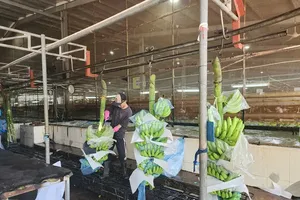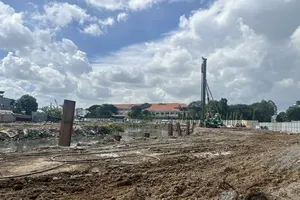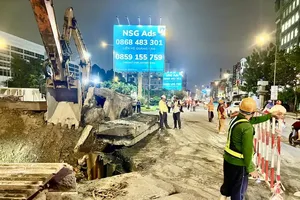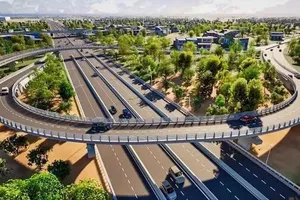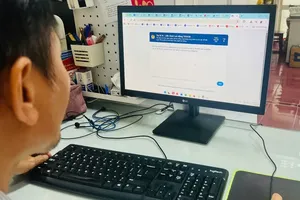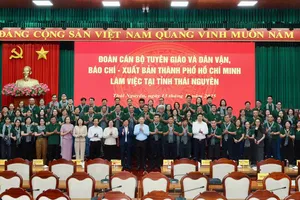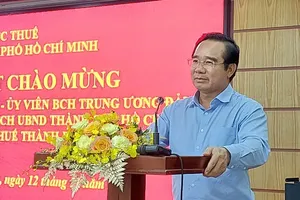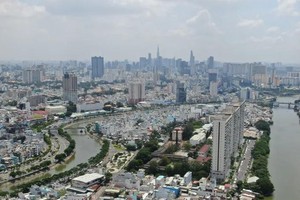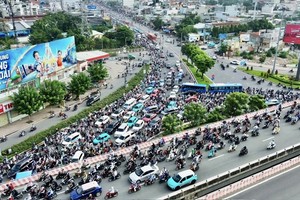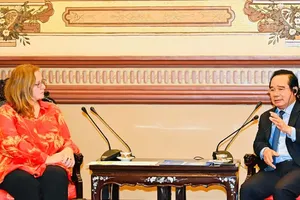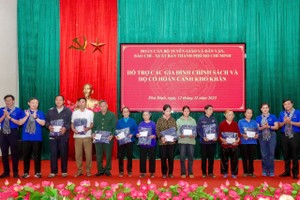
Head Lai Phu Cuong of the Natural Resources and Environment Division in Binh Tan District proposes installing monitoring cameras to deter littering.
For the last few years, his district has grappled with persistent illegal dumping, particularly in unmanaged vacant lots and along canal banks. However, there has been a gradual decline in these incidents. Specifically, from 48 polluting waste hotspots in early 2024, the district has been able to reduce that number to just 8.
A key strategy has been the installation of surveillance cameras at chronic dumping sites. Simultaneously, Binh Tan District has tasked ward authorities with active monitoring and management of these areas. Additionally, the weekly ongoing canal dredging efforts, involving local community groups and veterans, are crucial. By improving water flow, a further reduction in littering is anticipated in the near future.
Dr Hoang Van Phuc from Bach Khoa Saigon College opts for the integration of Directive 19 into educational curricula. He voiced that building a pristine, litter-free city hinges on cultivating environmental consciousness from an early age. It is, therefore, necessary to embed the municipal Party Committee’s Directive 19, which champions a litter-free environment and flood mitigation, into school curricula, not just confine it to governmental and organizational levels.
Instilling principles of personal hygiene and environmental responsibility from grade one is vital. Throughout their schooling, students must understand the detrimental effects of littering. Field trips and community clean-up initiatives will solidify these lessons, fostering a generation of environmentally responsible citizens.
Dr Tran Quy from the Vietnam Institute for Digital Economy Development suggests imposing stiff penalties for indiscriminate littering, saying that the aspiration to transform HCMC into a Singapore-like urban paradise is shared by many. Singapore’s success stems from its stringent penalties for littering, regardless of residency or nationality. In addition to substantial fines, violators are mandated to perform community service. This model warrants serious consideration for HCMC.
While existing directives and regulations address littering, the problem of throwing waste illegally on streets, in parks, and on canals persists due to inadequate enforcement and lenient penalties. Fines of VND1-2 million (US$38.8 – 77.6) are insufficient deterrents.
There is a need for significantly higher fines and unwavering, equitable enforcement. Singapore’s example demonstrates that while education is vital, it must be reinforced by severe and consistent penalties in order to turn HCMC to a greener and more livable city.
Lawyer Le Duc Tho from the HCMC Bar Association stated that the City Party Committee’s anti-littering campaign has garnered broad support from state officials to city dwellers, yet behavioral change remains uneven.
A critical gap is the lack of frontline law enforcement. While environmental police address industrial pollution from manufacturers and businesses, individual littering often goes unchecked, fostering a sense of impunity.
To remedy this, it is critical to empower local police to monitor and penalize littering in the absence of dedicated forces. Their proximity to communities and professional expertise make them ideal law enforcers. By integrating this responsibility into their duties, we can ensure swift and effective enforcement against littering offenses can be ensured, urging the public to fully respect applicable laws on this matter.
